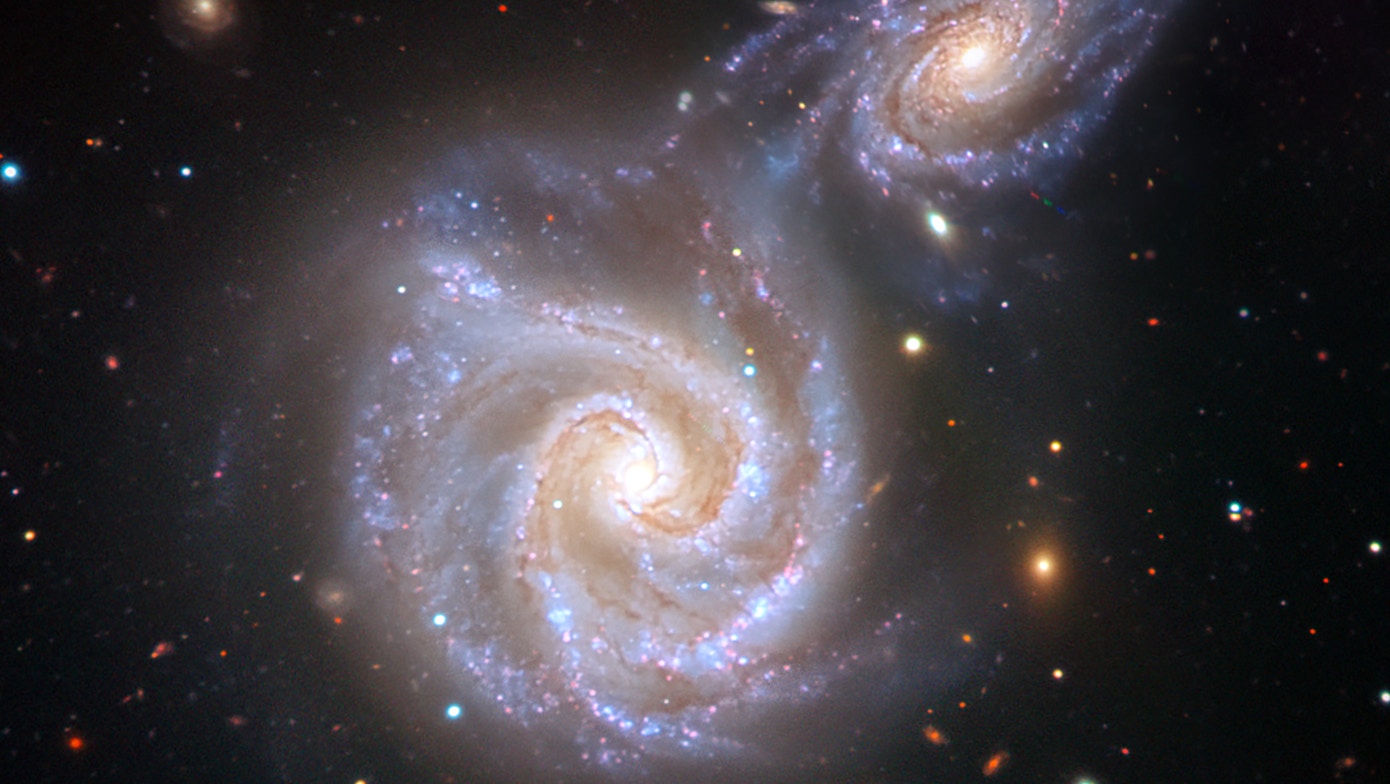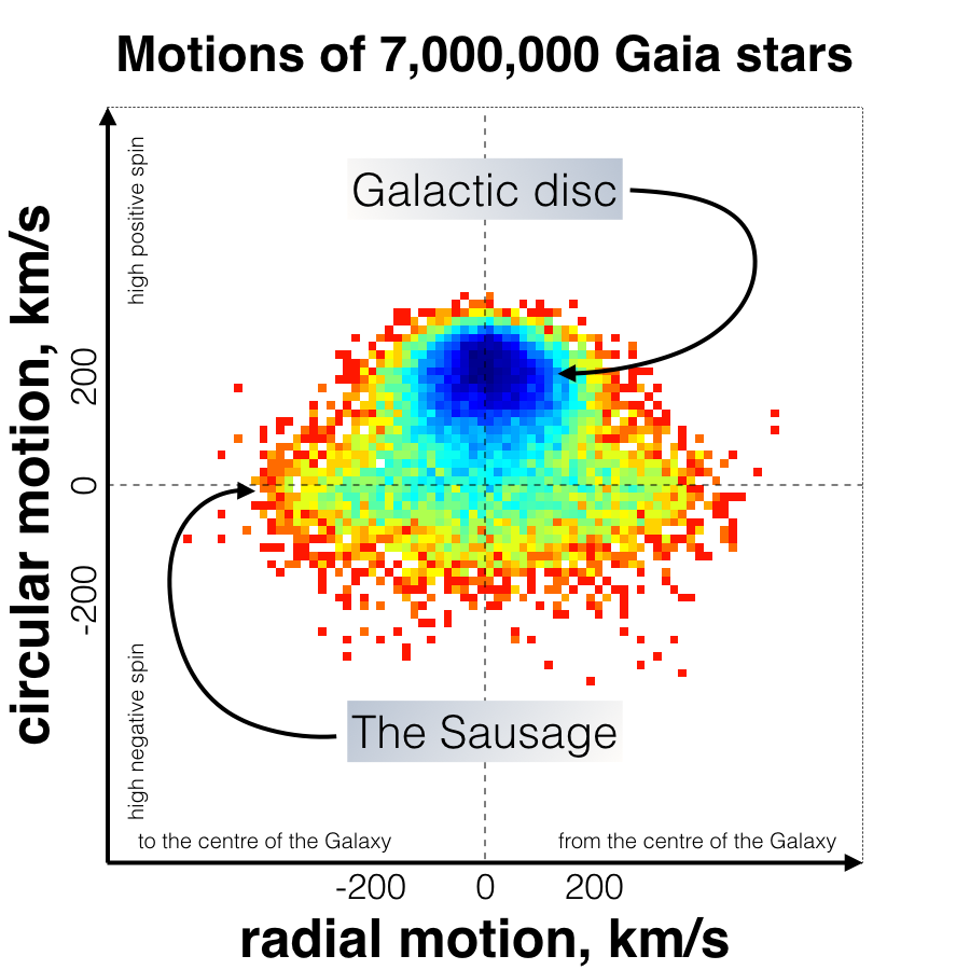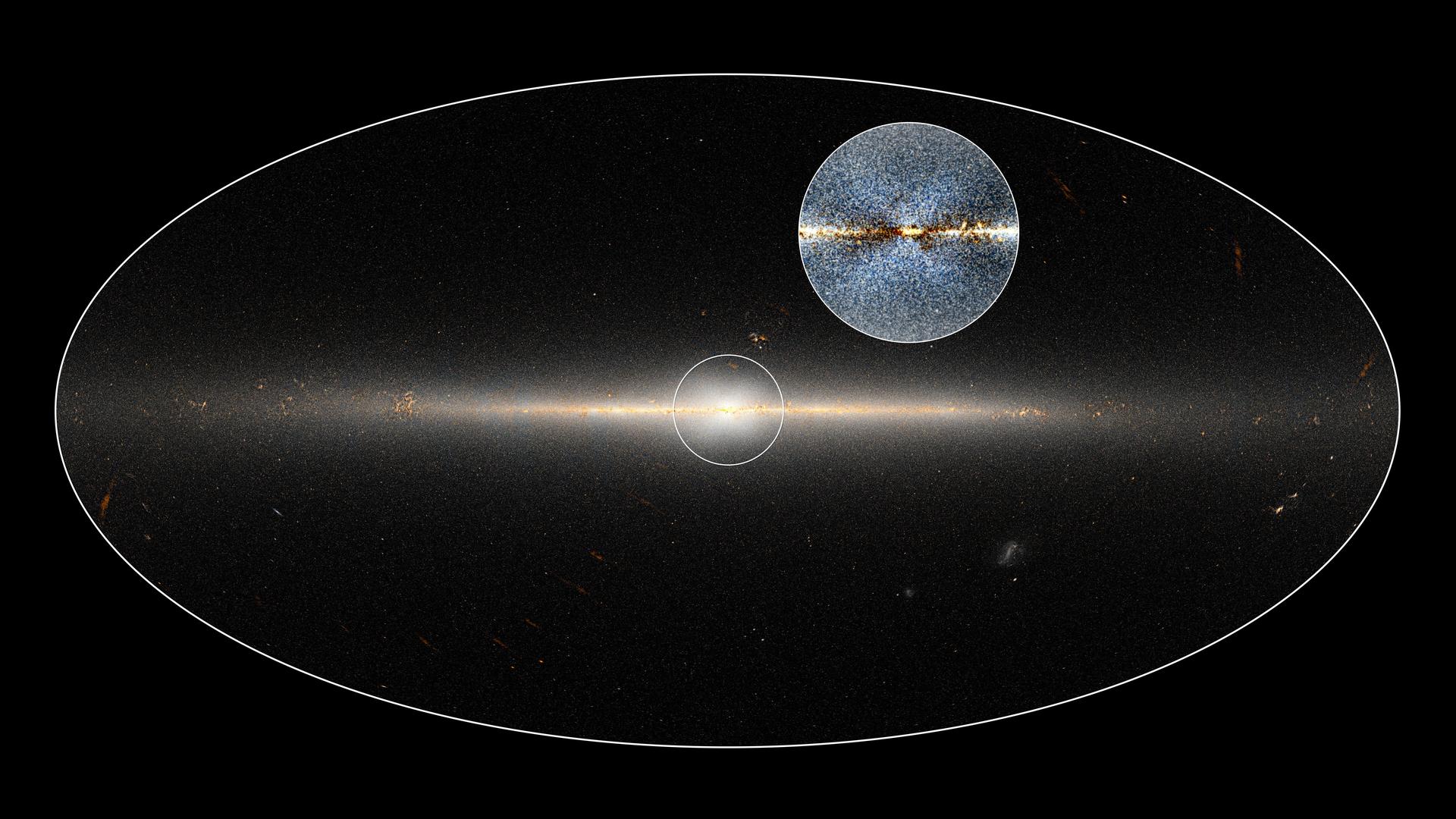How a Renegade 'Sausage Galaxy' Gave the Milky Way Its Bulge

About 10 billion years ago, a young and reckless Milky Way crashed head-on into the sausage-shaped galaxy next door, and neither star system was ever the same.
The sausage-shaped galaxy — actually a dwarf galaxy of a few billion stars that researchers have dubbed "the Gaia Sausage" — was probably shred to mincemeat on impact with the much larger Milky Way, but not before imposing some serious changes on our home galaxy. In a series of several new papers published in the July edition of the journal Monthly Notices of the Royal Astronomical Society, the Astrophysical Journal Letters and the preprint site arXiv.org, an international team of astronomers described what these changes may have meant for our young galaxy's formation.[Stunning Photos of Our Milky Way Galaxy (Gallery)]
"As the smaller galaxy broke up [following the crash], its stars were thrown onto very radial orbits," study author and University of Cambridge astronomer Wyn Evanssaid in a statement. "These Sausage stars [that is, stars with a long, tight orbit] are what’s left of the last major merger of the Milky Way."
Using data collected primarily by the European Space Agency's Gaia spacecraft, which launched in 2013 to create a 3D portrait of about 2 billion stars in the Milky Way (which is about 1 percent of the total stars estimated to be blazing through our galaxy), the researchers looked at the precise orbital movement of several hundred thousand stars whose trajectories seemed slightly out of place compared to their galactic neighbors.
The stars in question had extremely narrow, "needle-like" orbits, the researchers said, suggesting they may have all originated from the same place and entered into similar orbits when the Milky Way wrenched them from their host galaxy's pull.
These "Sausage stars" all follow a similar path, swooping toward the galactic center before making tight U-turns and swooping out again toward the halo of scattered dust and stars at the edge of the Milky Way. When the researchers plotted the trajectories of these stars side by side, the distinct sausage shape emerged. Mathematical models confirmed that this kind of eccentric, radial orbit was consistent with a galactic collision.
"The collision ripped the dwarf to shreds," study author Vasily Belokurov, an astrophysicist at the University of Cambridge in England, said in a statement.
Get the world’s most fascinating discoveries delivered straight to your inbox.
And while our galaxy's gravity tore the Gaia sausage apart, a complete Milky Way makeover may have unfolded as a result.
Loose Sausage stars plunged through the Milky Way's disk, possibly splitting it apart and initiating an eons-long healing process, the researchers wrote. The Sausage stars continued pouring into the Milky Way's galactic center, plumping it up into the cosmic bulge that can be observed today when the Milky Way is observed from its edge. Meanwhile, on the outer rim of the crash site, the shredded Sausage galaxy may have spilled a tattered trail of stars, dust and dark matter around the Milky Way's rim, helping to form the signature halo that now rings our galaxy.
"While there have been many dwarf satellites falling onto the Milky Way over its life, this was the largest of them all," said study author Sergey Koposov, an astrophysicist at Carnegie Mellon University in Pittsburgh.
The Gaia Sausage galaxy had a total mass that was about 10 billion times greater than Earth's sun, meaning it probably contained a few billion stars of varying sizes. That's a mighty sausage compared to your deli-variety Hebrew National, but still a mere snack compared to the Milky Way's estimated 100 billion to 200 billion stars.
Based on the ages and orbits of the Sausage stars, the great Sausage crash likely occurred sometime between 8 billion and 11 billion years ago, the researchers wrote.
That predates the formation of Earth by a few billion years (Earth is estimated to be around 4.5 billion years old), but with lots of luck, future humans may be around to witness the next big galactic merger. The nearby Andromeda galaxy (total mass: about 1.2 trillion times the mass of Earth's sun) is thought to be on a crash course with the Milky Way, which could result in the two galaxies combining into one massive "Milkomeda" galaxy about 4 billion years from now. It's no space sausage, but it will totally change the night sky — that is, if anyone's around to see it.
Originally published on Live Science.

Brandon is the space / physics editor at Live Science. With more than 20 years of editorial experience, his writing has appeared in The Washington Post, Reader's Digest, CBS.com, the Richard Dawkins Foundation website and other outlets. He holds a bachelor's degree in creative writing from the University of Arizona, with minors in journalism and media arts. His interests include black holes, asteroids and comets, and the search for extraterrestrial life.




